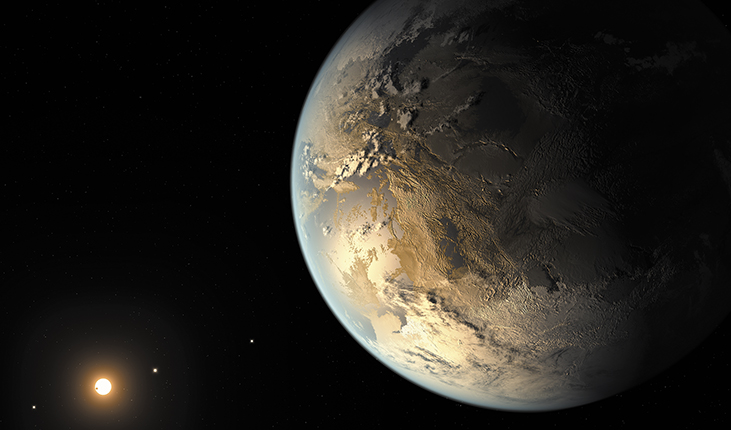Atmospheric seasonality flags life on exoplanets
DOI: 10.1063/PT.3.3968
Charles Keeling’s measurements of atmospheric carbon dioxide atop Hawaii’s Mauna Loa show that the concentration of the greenhouse gas has increased by 30% since the late 1950s. They also show a sinusoidal seasonal variation as trees and other plants in the Northern Hemisphere bloom, flourish, shed leaves, and lie dormant year after year. If an exoplanet harbors life and if its rotational axis is tilted, the composition of its atmosphere would likely vary with its seasons. Could those variations be detected by remote spectroscopy?

NASA AMES/SETI INSTITUTE/JPL-CALTECH

To answer the question, Stephanie Olson of the University of California, Riverside, and her collaborators first identified three gases whose seasonal variations, they first thought, might serve as indicators of life: CO2, methane, and oxygen. The researchers were pessimistic about CO2 because its observable signatures—absorption lines around 4.3 μm and 15 μm—are likely to be saturated throughout an exoplanet’s year. Methane’s suitability as an indicator is diminished by the fact that a component of its seasonal variation is photochemical in origin and would occur regardless of the presence of life.
Oxygen turns out to be more promising. Like CO2, it participates in photosynthesis. Unlike CO2, it is not especially soluble in water, which means the presence of an ocean would not muffle variations in its atmospheric concentration. What’s more, the O2 concentration determines the ozone concentration, which can be readily measured because of absorption features in the near-UV.
For their case study, Olson and company calculated the seasonal signal of O2 and O3 from an Earth-like planet orbiting a Sun-like star at a period when only simple life-forms existed. Their conclusion: Seasonal, biogenic variation in O3 could be detected by a large-aperture space telescope equipped with a UV spectrometer. (S. L. Olson et al., Astrophys. J. Lett. 858, L14, 2018
